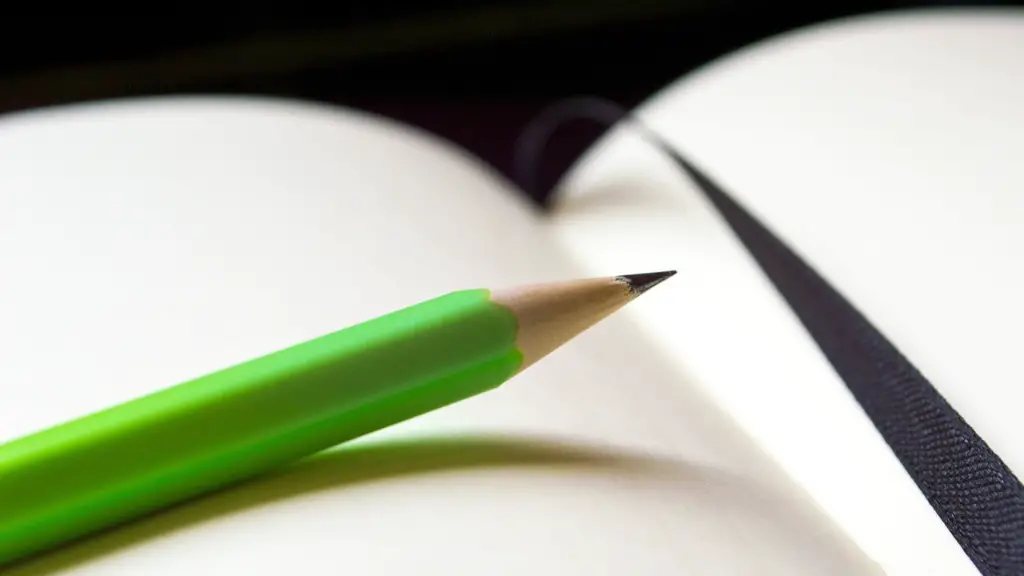The Power Of Poetry In Education
Poetry, in its various forms, has been a cornerstone of humanity since time immemorial. Historically, it has been used to tell stories and express emotions, making it an invaluable tool in education. The ability to analyse, interpret and appreciate poetry is essential for developing critical and creative thinking skills.
In recent years, however, the teaching of poetry in some schools has diminished in favour of more traditional approaches to literacy instruction. Despite this, there is tremendous educational value to incorporating poetry into the curriculum. This article will explore the reasons why poetry should be taught in schools, and how teachers can successfully integrate it into their lesson plans.
One key benefit of teaching poetry in the classroom is its ability to inspire creativity. Poems provide students with an interesting and engaging way to practice literary skills such as writing, reading, and interpreting. They can also help students to discover and explore their own creativity, through the use of imagery, symbolism and metaphors. In addition, by encouraging students to write their own poems, teachers can help to nurture a sense of self-expression and confidence in the ability to write and communicate effectively.
Furthermore, learning poetry can help students to better appreciate the nuances of language. As students explore the different poetic forms and the language employed in them, they’ll learn to appreciate the beauty of words and the power of storytelling. As a result, their written and spoken English skills can be honed, development of which is highly beneficial for their overall educational attainment.
Finally, by instilling an appreciation for poetry in young people, we can help to foster better cultural and interpersonal connections. Understanding a poem requires open-mindedness, respect and empathy, which can help to cultivate a deeper connection between people of different backgrounds. In addition, the insights and perspectives gained through analysis of a poem can help to open up conversations on topics such as morality and justice.
Integrating Poetry into the School Curriculum
When integrating poetry into the school curriculum, it’s important that teachers create a safe and inspiring learning environment. Students should feel comfortable in being able to express themselves, while being encouraged to develop their critical thinking skills and explore the complexities of language.
The key is to ensure that students remain engaged, as trite assignments and lack of creativity can quickly take the enthusiasm out of learning about poetry. When introducing a new poem, teachers should feed into the students’ curiosity by discussing the poem’s background and the rhetorical devices used. As the poem is explored, students should be asked to consider the emotions and ideas conveyed, and consider their own interpretations.
By integrating enjoyable activities into the lessons, students can develop analytical skills without it feeling overly academic. Utilising features such as props and physical activities to animate poetry recital can help to make the subject more attractive. Additionally, encouraging students to write their own poetry can also be helpful in reaching an understanding of various topics.
One way to bolster writing skills is by asking students to replicate a poem’s structure and use of language. This exercise can help them to better understand the poem’s subject and the overall concept, while also familiarising them with poetic conventions. Lastly, teachers should ensure that students are given the opportunity to share their work. By having their poems read out loud or performed in class, students can gain confidence in their work and feel proud of what they have achieved.
Future of Poetry in Education
It is clear that poetry holds considerable educational value and that it should be included in the curriculum. As schools promote literacy-based learning, it is imperative that teachers not overlook the importance of poetry. By understanding the power of poetry and its relevance to different aspects of learning, teachers can create learning experiences that are meaningful, creative, and engaging.
In the future, it is likely that even more sophisticated tools for poetry teaching will emerge. These can range from AI-powered prompts to generate poems, to virtual or augmented reality experiences that enable students to explore poetry in a more immersive environment. In any case, teachers should be ready to embrace new technologies and integrate them into their lesson plans, in order to cultivate a better appreciation of the art form.
Fostering Appreciation
By introducing poetry in a playful and engaging way, teachers can help to instill an appreciation of the form among young people. Moreover, such an approach can help to ignite a passion for literature that can be carried into adulthood. Through thoughtful instruction and support, teachers can ensure that students understand the importance of poetry and apply these skills in various contexts as they progress.
At a broader level, amplifying poetry’s educational value can help to elevate its status in today’s society. In recent years, it has become the subject of misinformation and controversy, with some criticizing it as an outdated or elitist form of literature. However, by emphasizing its educational relevance and showing how it can be used to express one’s own voice, we can help to create a greater appreciation of poetry and its potential for our children’s learning.
Integrating Poetry in the Classroom
When teaching poetry in the classroom, teachers should take their cues from the individual students and the context of the lesson. For example, if the topic of the lesson is World War I, teachers can use famous poems written during that period as an entry-point into the discussion. This can help to contextualize the poem and provide students with a better grounding in history.
Ultimately, teaching poetry requires patience, creativity and an appreciation of the subject. Teachers must strive to make the subject appealing by relating it to other disciplines, such as history and language, and by leveraging visual aids and multimedia tools. With the right instruction and classroom environment, poetry can become an invaluable asset in the educational process.
Melding Technologies and Poetry
Technology has already had an impact on poetry, having provided a new medium for authors to share their work. Through apps and websites such as Medium, poets have been able to reach new audiences and have their work read by millions of people. Technology has also been leveraged to create interactive experiences around poems, such as augmented reality installations and interactive poetic installations.
Going forward, technology will continue to have a profound influence on poetry, and it is important that teachers are ready to embrace these changes. By leveraging tools such as VR, AR and AI, teachers can create unique learning experiences for students and help to pique their curiosity about the subject. Using interactive devices and tools, teachers can help to shape how students interact with poetry, and provide them with the tools to bring their creative visions to life.
Developing Critical Thinking
When teaching poetry, it is important that students develop their critical and analytical thinking skills. Through the use of rhetorical devices, imagery and symbolism, students should be encouraged to analyse the poem and consider different perspectives. Gathering and interpreting evidence is an important activity, which can help to deepen both student’s understanding of the text, and their overall appreciation of poetry.
Follow-up activities can be used to explore various topics in more detail, such as morality and social issues. By discussing different interpretations and debating various points-of-view, students can gain invaluable insights and develop a deeper level of understanding. This can help to strengthen their written and spoken English skills, while also improving their overall educational attainment.
Expanding and Experimenting
In addition to reading and interpreting poems, teachers should also encourage students to explore and experiment with the form. By being exposed to different types of poetry such as haikus and sonnets, students can gain an appreciation for the range of styles available, and discover which particular forms of poetry they are drawn to. This can help to foster creativity, as students take ownership of their learning by developing their own unique styles.
Furthermore, students should also be encouraged to explore how their own emotions and experiences can feed into their poetry. By leveraging technology, teachers can provide students with the tools they need to write their own poems, while also giving them the opportunity to share their work with their peers. This can help to foster an appreciation for each other’s writing, while also boosting self-esteem and confidence.
Ultimately, poetry is an invaluable tool for education and should be included in the curriculum. By leveraging the power of poetry through thoughtful instruction, teachers can help to inspire creativity, develop critical thinking, nurture a passion for literature, and positively impact their students’ overall academic success.





